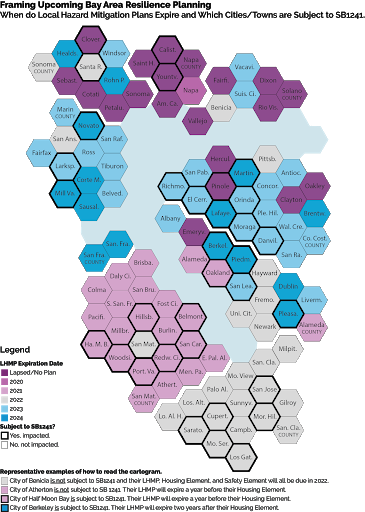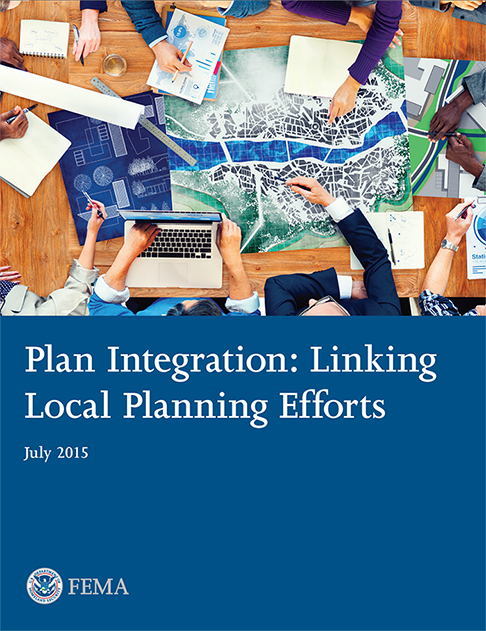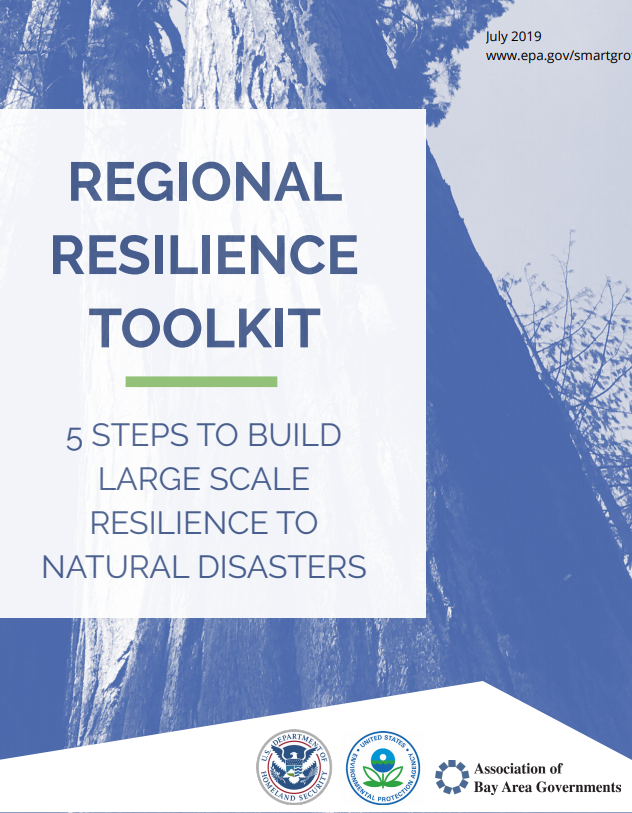
Planning
Planning for current and future hazards protects public safety, reduces loss of life and property, protects a community’s unique resources and speeds recovery. ABAG’s Resilience Program offers resources for local, general and specific mitigation, safety and recovery planning, including tools for scoping, development and implementation of plans in compliance with state and federal regulations.
Planning for Current and Future Hazards
Resilience planning is an essential effort through which local governments assess and address known hazards in order to:
- Protect public safety and prevent loss of life and injury;
- Reduce damage to buildings and infrastructure;
- Reduce the economic and financial impact of disasters;
- Protect community’s unique economic, cultural and environmental resources;
- Speed community recovery;
- Plan to reduce long-term risks from hazards associated with climate change.
Local Hazard Mitigation Plans and General Plan Safety Elements
Resilience planning can be a part of any planning effort, but there are a few key documents required by state and federal law to advance resilience planning in a community. These include Local Hazard Mitigation Plans (LHMP) and the Safety Element of a General Plan.
Local Hazard Mitigation Plans and General Plan Safety Elements are plans through which communities characterize their hazard and climate risks and develop strategies for taking action. They are frequently updated: See the Upcoming Bay Area Resilience Planning map.
In this section, you will find guides, workbooks, checklists, strategy inventories and past plans. The same planning tools and methodologies can be used across both local and general planning efforts, or incorporated into other initiatives, such as specific plans, housing elements, etc., as well as to create hazard-specific plans and initiatives — e.g. community wildfire protection plans, sea level rise shoreline adaptation plans, etc. With these resources, a jurisdiction can use a single process to meet the requirements of both FEMA-approved local hazard mitigation plans and state-compliant General Plan Safety Elements.
Pre-Disaster Recovery Plans

Pre-disaster recovery plans offer communities an opportunity to think about tools, resources and governance they may need in the aftermath of a future disaster. These planning efforts can ensure a more effective and expedited recovery, ensuring faster rebuilding, greater community cohesion and more effective city operations in the rebuilding phase that follows a disaster event.
Upcoming Bay Area Resilience Planning (Hex Map)

This comprehensive resource illustrates the known status of local hazard mitigation plans in the nine-county Bay Area, indicating when the plan needs to be updated for each jurisdiction. It is helpful for considering how LHMP updates coordinate with other planning efforts. Communities may also find it helpful to know which neighboring communities are also doing this work at the same time. In 2022 all California cities must have recently updated their General Plan Safety Element to comply with state law (SB 379).
This map also shows which towns and cities are subject to SB 1241, which applies to communities with very high fire hazard severity and unincorporated communities in state responsibility areas. (Find more information about communities affected by SB 1241, on the CalFire Severity Zones Maps.)
General Planning Resources
The following resources support planning efforts with strategy, tools and direction for developing plans and linking planning efforts.
Plan Integration: Linking Local Planning Efforts

Plan integration involves the incorporation of hazard mitigation principles and actions into community plans and community planning mechanisms into hazard mitigation plans. This guide enumerates the benefits of approaching planning from an integrated standpoint and identifies the types of plans that can be integrated. It provides approaches and examples for the:
- Integration of Hazard Mitigation Principles into Other Local Planning Mechanisms
- Integration of Hazard Mitigation Principles into General Plans
- Integration Across Agencies and Departments
Regional Resilience Toolkit - 5 Steps to Build Large Scale Resilience to Natural Disasters

The goal of this Toolkit is to help cities, regions and other partners integrate various planning processes – including for hazard mitigation, climate adaptation, sustainability and equity – into a single process to create a common action plan. This Regional Resilience Toolkit can be used by regional partnerships and local jurisdictions just starting to plan for resilience, or by those ready to move from planning to action. It is a useful guide for any planning effort that incorporates resilience planning.
What the FLUP? Future Land Use Planning for Safe, Smart and Sustainable Communities

This workbook provides a high-level overview for hazard mitigation and climate adaptation plan development. It curates a collection of resources and worksheets that can be pulled out and used as part of a planning process.

